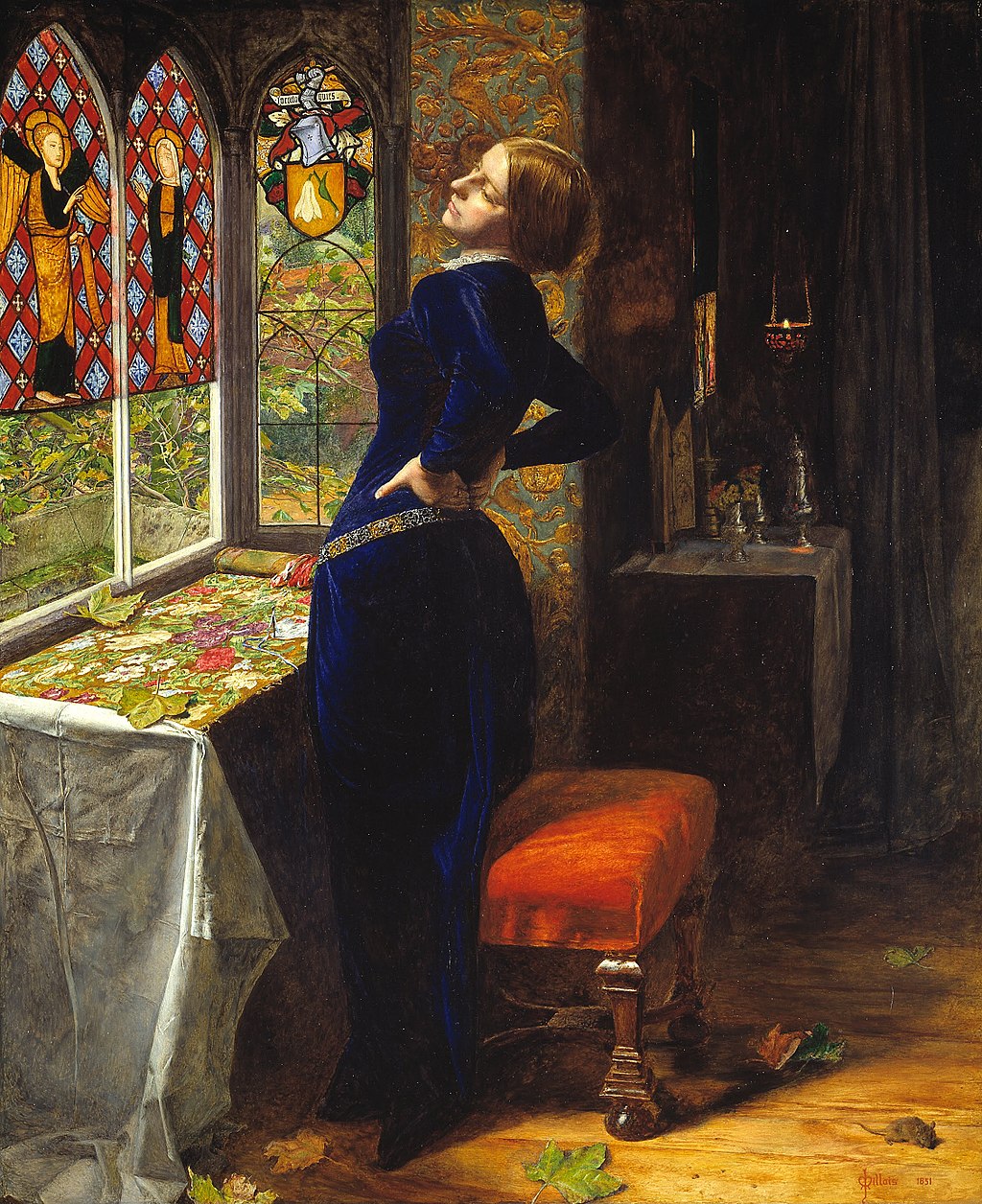Lately, the Arts and Crafts movement and Pre-Raphaelite movement seem to be having a moment. IKEA recently released a collection of William Morris-inspired prints for some of their home textiles, and apparently “Pre-Raphaelite curls” was a trending hairstyle this past year. Romantic details and nature have been trending lately, so it was only a matter of time before these types of art movements came back into style!
Delving into the history of the Pre-Raphaelite art and Aesthetic Dress is a thought-provoking and inspiring endeavour, especially if you like art history, fashion history, anything fantasy-adjacent, medieval-y things, and velvet. We are hoping that revived interest in these movements means we will be seeing more Aesthetic Dress-inspired historical costumes. Anyone in for making a tea gown??

Pre-Raphaelite painters were heavily influenced by pre-Renaissance art, mythical and legendary themes, medieval motifs, literary topics, and imitation of nature. Different painters focused on different themes; while the Pre-Raphaelites had common goals with their art, their bond was loosely formed and many of them developed distinctive and specific styles after the movement began in the mid-19th century. Some painters focused on religious themes, while others focused on Shakespearean themes, and others focused on medieval legends. Some painters dabbled in a variety of themes in their art.

These paintings are so beautiful and interesting, and they really evoke a sense of fantasy and myth. It’s easy to see why they have stood the test of time!

Later in the nineteenth century, after Pre-Raphaelite style had been established for several decades, Pre-Raphaelite revivalist painters like Eleanor Fortescue-Brickdale were inspired by the first generation of Pre-Raphaelite painters to continue incorporating these specific sort of themes and philosophies into their artwork.

Pre-Raphaelite painters were subversive in their pursuit of such a distinctive art style, as it differed from ‘the norm’ in Victorian society. Likewise, adjacent movements (like the Arts and Crafts movement mentioned earlier) advocated for social reforms and took strong stances in their group beliefs and morals. These movements were particularly opposed to the rise of industrialism, and promoted a return to a simpler and more bespoke sort of lifestyle. We think of them today as counter-cultural. Related movements to Pre-Raphaelitism and the Arts and Crafts movement include the Dress Reform movement and the Aesthetic Dress movement.
If you are a fashion history buff, you have probably heard of the Dress Reform movement and how it influenced women’s dress in Victorian society. Aesthetic Dress was also a fashion movement that advocated for rejecting typical Victorian fashions and ornamentation in pursuit of more ‘natural and simple’ silhouettes and motifs. Aesthetes and Dress Reformers alike believed this sort of dress was healthier than the heavily structured sort of dress that was typical in Victorian society. For example, Aesthetic Dress was often designed to be worn without a corset, in an effort to highlight a less-exaggerated bodily shape (though of course, we costumers know that the discourse around corsetry was and continues to be replete with inaccuracies about health). Lots of drapery, flowing fabrics, looser shapes, and nature-inspired trimmings are distinctive of Aesthetic Dress.

The tea gown is a particularly iconic example of Aesthetic Dress. These tea gowns were loose house dresses, that were originally worn only around the home (later, as they became popular, they were worn outside of the home a bit more). Tea gowns evoked the medieval and ancient Greek and Roman shapes that also inspired Arts and Crafts movement artists and Pre-Raphaelite painters. Tea gowns could be worn with or without corsets, as they had a more billowy and loose shape.

Something special about tea gowns and Aesthetic Dress is that they arose in society at the same time that women’s roles in society were starting to be questioned, diversified, and reformed. As sort of a nexus point between art, social commentary, and dress, Aesthetic Dress promoted development of individual senses of style and exercising self-expression. Since tea gowns were originally designed to be worn within the home, they offered an opportunity to experiment with Aesthetic Dress in an environment where women often felt that they had a heightened level of safety and personal agency.


As time progressed, Aesthetic Dress became more popular and influential on mainstream fashion. By the early 19th century, Aesthetic Dress began to influence haute couture designers like Paul Poiret, and it had a significant impact on the emergence of Art Nouveau as well.


There is so much to discuss about Aesthetic Dress and its impact on society! The same can be said of Pre-Raphaelite art. I wonder if we will start to see nods to Aesthetic Dress in mainstream modern fashion, now that these themes are starting to emerge as trendy again? An Aesthetic tea gown would be a super fun and interesting costuming project!





One Comment
Starling
January 15, 2023 at 10:37 AMI love this! During the depths of the pandemic, I created a capsule wardrobe of history-bounding, Pre-Raphaelite pieces. Comfortable, warm layers to swan around in while I was going precisely nowhere. And yes, more tea gowns, please!